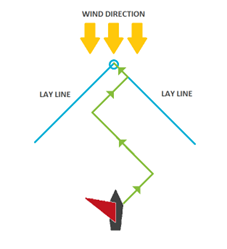Are you truly prepared for a target operating model journey?
Like any other industry, the Energy industry is constantly changing. And, like any other companies, Energy companies must react quickly or get left behind. Whether it is Oil and Gas companies adjusting to a $50/bbl market or the major electricity providers now competing with new, more agile competitors that can deliver higher levels of customer satisfaction at lower prices, established players must adapt to remain competitive.
And sometimes, to remain competitive, established players must transform the way they operate. Changing the core operating model can be an incredibly effective way to deliver change; however, it is not without risk.
A new target operating model can be very challenging to design and implement, and not every organisation is sufficiently prepared for this journey. A common failure is that organisations are closed to the new or radical thinking that will allow them to remain competitive. Throughout my career, I have found it worthwhile asking the three questions below before setting off. The answers to each question should be strongly affirmative; for if any answer is “no,” I would query whether or not the organisation is truly setting itself up for success
1. Are all solutions available for consideration?
The development of a target operating model should consider all design options and identify their strengths and weaknesses. In fact, if the team has not considered all options, then it has not done its job correctly. It may have missed opportunities to reduce risk, increase effectiveness, or minimise disruption (or all three).
A few years ago, I developed a target operating model for a financial services client. Initially, the focus was a new call centre which would be established in a new city. This approach (establishing a new call centre in a city where the client did not have a presence) naturally carried large amounts of investment, overheads, and risk. After considering all possible options, it was agreed that a better solution was to extend an existing call centre. This new solution provided all the required capabilities, while minimising the client’s cost, time to completion, and risk exposure
2. Will the target operating model team be part of the whole process?
A target operating model cannot be developed in a vacuum and sometimes the team requires access to sensitive information. For example, when building an executive team, the skills and experience of the people recruited may significantly impact the optimal structure of the organisation. So, although it is not likely that the team would be involved in executive placement, it is essential to keep them informed of this process and progress.
I’ve recently seen two projects (one organisation design and one target operating model design) run in parallel with minimal communication or interaction between them due to the need for confidentiality. The problem was the operating model team were always playing ‘catch up’ as changes to the organisation were proposed, agreed, and implemented without their knowledge. You can imagine the inefficiency and frustration this brought.
3. Are sub-optimal results acceptable in the short-term if they take us closer to our end goal?
Changing the core operating model can deliver a fundamental transformation, and on a large scale. Often this is too large to be successfully delivered in one project without significantly disrupting the organisation’s culture, infrastructure, or operations. That is why such changes are frequently implemented in phases. But phased transformations can lead to frustration, as intermediate states may look nothing like the desired end goal.
I think of large-scale change as similar to sailing upwind. A sail boat does not simply sail directly into the wind; it can only sail across the wind (at best, high-tech America’s Cup yachts can sail at 35° to the wind). When sailing upwind, the boat is always getting closer to its target, even though it is never sailing directly towards its target (unless it reaches the lay line).
Figure 1: Sailing upwind isn’t straight forward, and neither is implementing large-scale change.
Large-scale change can be the same; it can require implementing solutions that are, in the short-term, suboptimal and do not move the organisation directly to the end goal. This will cause pain but, with good planning, this pain will be short-lived and the transformation will ultimately be achieved.
When considering embarking on fundamental change to your own operating model, I recommend you ask yourself the three questions above. If the honest answers are “yes,” “yes,” and “yes,” then a new target operating model might be appropriate. But, if any of the answers are “no,” then your journey may be in vain.
Jacques
